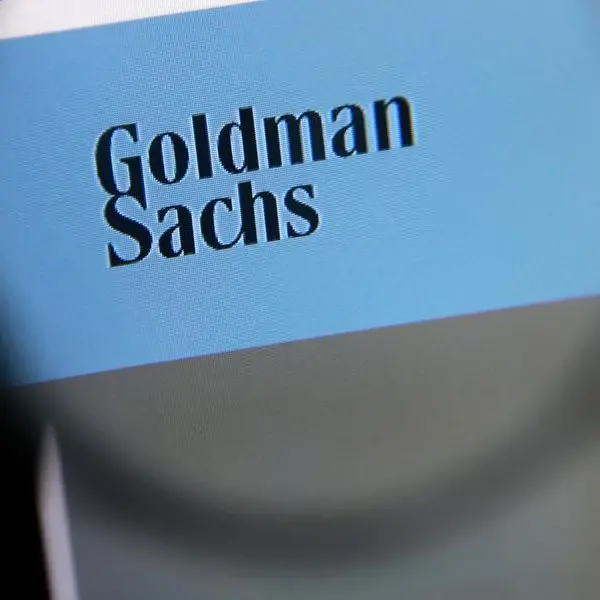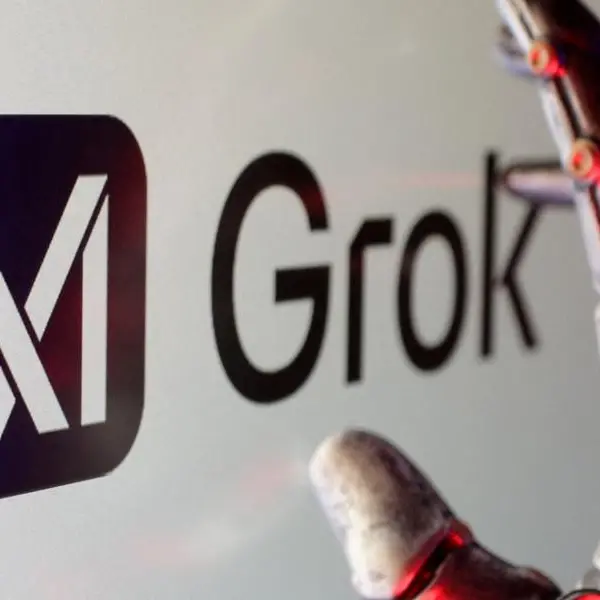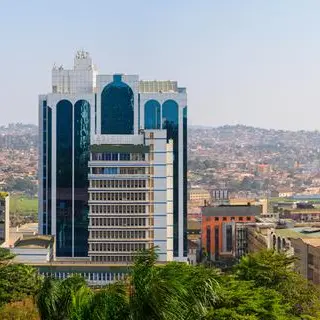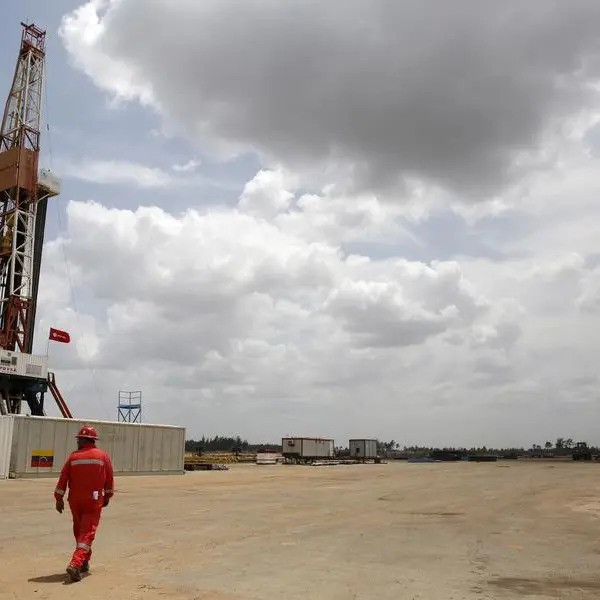PHOTO
CORSICANA, Texas - As temperatures crept above 100 degrees Fahrenheit (37.8C) on a July day, air-conditioners across Texas churned overtime and demand on the U.S. state's electricity grid flirted with a new demand record: 80 gigawatts (GW), nearly double the daily average.
But at a recently set-up bitcoin mine in West Texas, the computers were turned off, with only a trickle of power flowing to keep the lights on and the air cool.
As electricity prices hit $5,000 per megawatt hour on a hot day, it was no longer profitable to run the machines that compete to verify blocks of data and win new bitcoins, with the energy costs outstripping the value of the cryptocurrency produced during those expensive midday hours.
“What we need here is more renewables,” said Michael McNamara, CEO and co-founder of Lancium, the bitcoin mining tech company that manages the small facility.
His company aims to support just that, as part of a broader push that could help boost and green the power supply of Texas - which today gets nearly two-thirds of its electricity from fossil fuels - and potentially help shift energy-hungry bitcoin's image as a barrier to climate action.
In this windswept rural community, on the site of a dance hall where legendary Tejano singer Selena used to perform, Lancium is expanding its pilot crypto mining facility, fitted with a software system to manage the electricity that feeds it.
The operation will eventually draw more than 300 megawatts (MW) - enough to power about 60,000 homes - from increasingly plentiful wind and solar resources being built in Texas.
Under its plan to construct a "green campus" on the site, Lancium will rent out space to other companies to locate their mining machines, with all the equipment capable of being turned off quickly when power prices rise and energy is needed elsewhere in the grid.
Bitcoin proponents like McNamara say this feature will make Texas' grid more resilient - and turn their industry into a crucial, if unlikely, ally in the climate change fight and efforts to shift Texas toward a cleaner energy mix.
Many energy transition experts remain unconvinced.
Jesse Jenkins, an assistant professor at Princeton University who leads a lab focused on optimizing zero-carbon energy systems, said bitcoin miners are more likely to boost demand for fossil-fuel power.
When they do partner with clean electricity producers, they tend to crowd out other potential users of that energy, he said.
That could be a problem with demand for green energy expected to soar as companies try to meet net-zero emissions goals, and as demand for things like electric cars grows.
“They're making it slower to decarbonize the grid," Jenkins said of crypto mining operations.
Over the past year, the industry has been under attack in the United States for its environmental impacts.
Climate legislation in New York may ban some forms of crypto mining, while green groups have launched an anti-bitcoin campaign and Democratic senators are probing the industry's carbon footprint.
Lancium, however, is one of a constellation of market players that say their business has been misunderstood.
Bitcoin machines can soak up excess clean power production - and provide key revenue for renewables developers - on days when the wind is blowing and the sun is shining but there is not enough conventional demand on the grid, they argue.
“We want to make investments in renewables... but it does take years,” said Zachary Bradford, CEO of CleanSpark, one of the five largest crypto-mining companies in the United States, which is partnering with Lancium on clean-energy bitcoin projects in West Texas.
GOLD RUSH
Crypto miners have flocked to Texas, attracted by a supportive regulatory environment and relatively cheap power.
In West Texas, where power demand from the rural population often falls short of the region's available tens of gigawatts of renewables - mainly wind power - bitcoin miners are scaling up rapidly.
This summer alone, Argo Blockchain announced a mine that requires up to 200 MW, Aspen Digital revealed plans for two separate facilities for 180 MW combined, and Cipher Mining set up a 40-MW site, with the potential to add 400 MW.
To build the U.S. grid of the future to run electric cars, trucks, factories and heavy industry, total power capacity may need to expand nearly three-fold by 2050, according to the Department of Energy.
Blake King, a former renewable energy developer who worked as an engineer at the Electric Reliability Council of Texas (ERCOT), which runs the Texas grid, said the cryptocurrency industry can help incentivize clean energy development.
“With bitcoin mining, you can underwrite new generation capacity, with the bitcoin network as the constant buyer of energy," said King, who now works as a power markets engineer at investment and crypto firm Galaxy Digital.
But in early 2022, financial ratings agency Fitch warned utilities that relying on bitcoin miners to buy their power carried significant risks, given the volatility of the cryptocurrency market, which has plummeted this year.
LUCRATIVE DEALS
In Texas, crypto miners can take advantage of money-making opportunities thanks to their flexibility to switch off their kit.
Lancium, for example, has developed software that helps bitcoin miners lower their power costs by qualifying as a "controllable load resource".
This is one of a number of Texan programs that reward consumers, electricity generators and battery operators for working with the central grid operator to match supply and demand, maintaining grid stability.
Miners have also signed long-term power agreements that offer them a fixed low energy cost but also allow them to sell power back at a higher rate on days grid demand spikes, netting the difference.
In July, Riot Blockchain - which operates a 400-MW bitcoin mine in Rockdale, Texas - said it made more money from shutting off its equipment during peak demand than from mining crypto.
According to a report from the Tech Transparency project, an advocacy group, Texas may pay miners up to $170 million annually under these deals in the coming years.
While the industry says such practices help energy markets function well, they concern many environmental groups.
Jeremy Fisher of the Sierra Club said such incentives are "asking society to double pay" - both to produce the energy needed to mine bitcoin and then for miners to switch off their machines to ease grid strain to which they contributed in the first place.
LOCAL FIGHTS
In the small Texas town of Corsicana, Riot Blockchain is planning to build what may be the world's largest bitcoin mine.
The facility - which could consume up to 1 gigawatt, enough to power three-quarters of a million U.S. homes - will be constructed in a now quiet field abutting the Navarro Switch, a high-voltage transmission line that towers above the grasslands and cuts through surrounding ranches and fields.
The project has generated substantial local debate over its expected vast energy use and broader impact on the community.
In a public library in mid-July, the Concerned Citizens of Navarro County, a community group set up to oppose the mine, held a meeting to brainstorm ways to block it.
Crypto mines are "drawing on resources that are already precious for our area", said the group's founder Jackie Sawicky, adding that few in the community would benefit from the project.
She has a host of worries about the mine: that it will use scarce local water to cool machines, that it will drive up electricity costs in the region, and that the facility may obtain lucrative tax breaks, while generating few jobs.
"We can't afford bitcoin here," she said.
Sawicky's group has gathered nearly 1,000 signatures on a petition asking city leaders to stop the project, which broke ground in early August.
Riot Blockchain did not respond to emailed questions from the Thomson Reuters Foundation.
But in a letter sent in February to U.S. lawmakers, CEO Jason Les defended his company's environmental record, citing past instances when Riot had powered down its equipment during periods of grid strain.
Bitcoin, he argued, would "incentivize utilities to invest in new renewable energy sources", pointing to instances in other states where its facilities ran on clean energy.
Some experts say residents are right to be wary of such projects, especially if they lack plans to use green power.
“Unless miners are co-located with a renewable energy generator, they will likely be increasing (fossil fuel) emissions in the short term - and they will be raising prices," said Kyri Baker, an assistant professor at the University of Colorado Boulder who studies the Texas grid.
Household taxpayers - not big industrial players - cover most of the costs of grid maintenance in Texas, a concern as the grid surges in size to supply bitcoin mines.
CHICKEN AND EGG
According to Cleanspark CEO Bradford, installing bitcoin facilities and renewable power plants together suffers from what he calls a “chicken and egg problem”, with energy developers keen to ensure miners are committed for the long haul before moving ahead with their own plans.
That means many bitcoin mining operations today rely largely on existing grid power, more than 60% of which comes from coal and natural gas in Texas, making the state's surge in bitcoin mining a growing driver of climate-changing emissions.
Few bitcoin operators in Texas so far have been willing to shoulder the costs of building renewable power plants, said one consultant who asked for anonymity to discuss sensitive deals.
But King said investing in renewables would be a wise move for bitcoin miners planning for the future, since the upfront installation costs would be more than offset by cheaper electricity rates over time.
Joshua Rhodes, an energy specialist at the University of Texas at Austin, hired by Lancium to model bitcoin's impact, showed that a hypothetical build-out of crypto mining in Texas could boost the reliability of the grid and decrease its carbon intensity.
But that would require miners to locate at key nodes around the state and turn off their machines for long periods to let renewables flow to the grid.
"There's a pathway to doing this right - but I don't see (the industry) taking that path," Rhodes said. "I understand why environmentalists are frustrated."
Some bitcoin-and-renewables partnerships are emerging, however, including two projects Lancium says it is finalizing and a joint venture Cipher announced this month with a wind farm in West Texas.
But Sawicky sees bitcoin's arrival in Texas as bad news, no matter what kind of energy it uses.
She termed it a "ponzi" scheme to enrich far-away mining executives and investors while sucking up her town’s water, electricity and tax dollars.
"I’m building a movement here," she said, vowing to do her best to block the industry's expansion in Corsicana's backyard. "And anger is a renewable resource."
(Reporting by Avi Asher-Schapiro @AASchapiro; editing by Megan Rowling and Laurie Goering. Please credit the Thomson Reuters Foundation, the charitable arm of Thomson Reuters, that covers the lives of people around the world who struggle to live freely or fairly. Visit http://news.trust.org)





















